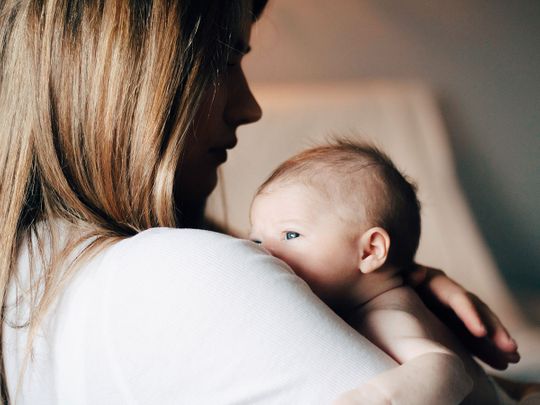
If your breast is red, feeling raw or has developed a sudden painful bump and you are breastfeeding, it’s probably mastitis. The condition refers to an inflammation of the breast. It doesn’t necessarily mean you need antibiotics however, it may just be caused by milk getting into and blocking one of your ducts. The body reacts to this in the same way as it would an infection, by increasing blood supply, explains the UK-based Breastfeeding Network.
What is mastitis?
Mastitis is an inflammation of breast tissue that sometimes involves an infection, says the World Health Organisation. The inflammation results in breast pain, swelling, warmth and redness. You might also have fever and chills.
Mastitis most commonly affects women who are breastfeeding (lactation mastitis). But mastitis can occur in women who aren't breastfeeding and in men.
Factors that make mastitis more likely in new mums
The Breastfeeding Network explains that improper latching or tight clothing may be putting you more at risk of mastitis. It adds that other risk factors to keep in mind are:
• Sudden changes in how often the baby is feeding, leaving the breasts feeling full
• Injuries, such as bumps or knocks from toddlers.
The signs of mastitis start to present with poor milk drainage. If your baby is not well attached to your breast, or has difficulty feeding, it may be hard for the baby to take milk effectively and some parts of your breast may not be drained during a feed. Unless this is improved you may get mastitis again and again. If in doubt, contact your midwife, health visitor or volunteer breastfeeding supporter for help with attaching your baby for feeding.
1. Cradle hold: Holding the baby with her head on one forearm and the baby’s body facing mum
2. Cross cradle: Holding the baby with the arm opposite the breast being used to feed.
3. Football hold: Holding the baby at the mothers’ side, supporting the baby’s head with the palm of the hand at the base of the head. This position is most comfortable for a new mum who has just had a C-section.
4. Side lying position: Wherein the mum can nurse while lying down.
How to prevent mastitis
Prachi Omkar Shetye, Physiotherapist and Lactation Consultant at UAE-based Somerset Clinic Dubai, explains that new mums can work on preventing the condition by doing the following:
● Draining both the breasts well to ensure milk is removed from all the milk ducts. After the baby feeds, you can express milk with a gentle massage to empty the breasts completely.
● If feeding twins, triplets or tandem breastfeeding, ensure that breasts are changed for each baby during the consecutive feeds for more thorough emptying of breasts.
● Do not miss feedings. If direct breastfeeding is not possible, express milk to keep breasts drained.
● Do not replace feeds with formula intermittently unless advised by your lactation consultant, as the breasts remain full during this time.
● Do not wear a bra with underwire or one that is too tight as this will cause unequal pressure on your breasts creating pockets for milk to get trapped.
Recovering from mastitis? Do this, not that
This condition should not be taken lightly, says Omkar Shetye. Appropriate medical guidance can reduce the escalation of the mastitis. While continuing medical treatment for mastitis, a mum can:
● For pain, apply warm heat for 10-15 minutes.
● Check fever frequently; if the fever continues for more than 24 hours, re-visit the doctor.
● Rest up; get up only to feed the baby or to express milk.
● Use the infected breast, even if it has discharge to feed as this will reduce the fullness and also drain milk from overall supply.
● Do not directly massage over the lump or swelling, instead gently massage above and below it leading it to the nipple, this will effectively drain any trapped milk in the blocked duct.
● Drink enough fluids throughout the day.
● Most importantly, wear loose clothes. Choose a bra with correct fit to avoid unequal pressure. Also, change the bra frequently if milk leaks into it or there is a discharge to maintain hygiene and further infection spread.
Have a topic you'd like us to cover? Write in to us at Parenting@gulfnews.com



